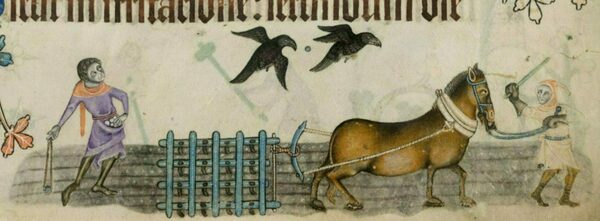From the MI Blog: The Raven’s False Greeting: Animal Language and Medieval Fable

Talking animals are a ubiquitous element in fables. They do not evoke wonder from human characters within the narrative, nor seem to require any explanation; this contrasts with other sorts of stories (everything from Marie de France’s Guigemar to contemporary fantasy novels) where the appearance of a talking animal signals the beginning of some rare adventure for humans. Notably, there is, however, one fable I can think of that seems to portray an animal whose ability to talk is liminal. That is, he can utter words, yet he is not really treated as a speaker. His status seems closer to that of a “real” animal who can mimic human speech, and that is in fact key to the story.
The fable in question is ascribed to Phaedrus, the author of the first extant literary fable collection. While Phaedrus wrote in the first century, his five books of fables were the basis for much of the “Romulus” tradition in prose and verse, which flourished in the Middle Ages. The aforementioned fable is called “The Traveler and the Raven” (Viator et corvus). The tale is found in “Perotti’s Appendix,” named for the Italian humanist, Niccolò Perotti (1429–80), who transmitted it; I offer a translation of it below, with the text based on Ben Edwin Perry’s edition.
This is an excerpt. Read the full blog, published on April 3, 2024, by Dr. Emily Mahan.